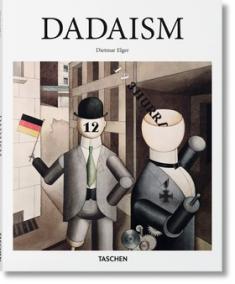Dadaism
Dátum vydania: 01.01.2015
Emerging amid the brutality of World War I, the revolutionary Dada movement took disgust with the establishment as its starting point. From 1916 until the mid-1920s, artists in Zurich, Cologne, Hanover, Paris, and New York launched a radical assault on the politics, social values, and cultural conformity which they regarded as complicit in the devastating ...
Naša cena knihy: 0,00 €
Zasielame: Vypredané
Detaily o knihe
Počet strán: 96
Väzba: Pevná S Přebalem Lesklá
Rozmer: 260x210 mm
EAN: 9783836505628
Rok vydania: 2015
Zákazníci, ktorí si kúpili túto knihu, si kúpili aj...
O knihe
Emerging amid the brutality of World War I, the revolutionary Dada movement took disgust with the establishment as its starting point. From 1916 until the mid-1920s, artists in Zurich, Cologne, Hanover, Paris, and New York launched a radical assault on the politics, social values, and cultural conformity which they regarded as complicit in the devastating conflict.
Dada artists shared no distinct style but rather a common wish to upturn societal structures as much as artistic standards and to replace logic and reason with the absurd, chaotic, and unpredictable. Their practice encompassed experimental theater, games, guttural sound-making, collage, photomontage, chance-based procedures and the “readymade,” most notoriously Marcel Duchamp’s urinal, Fountain (1917). Throughout, the Dadaists considered the visual appearance of their work secondary to the ideas and critiques it expressed. In this sense, Dada may be seen as a fundamental precursor to conceptual art.
With a selection of key works from some of the most famous proponents of Dada such as Tristan Tzara, Marcel Duchamp, Hannah Höch, Kurt Schwitters, Francis Picabia, and Man Ray, this book introduces this urgent, subversive, and determined 20th-century movement and its lasting influence on modern art.











